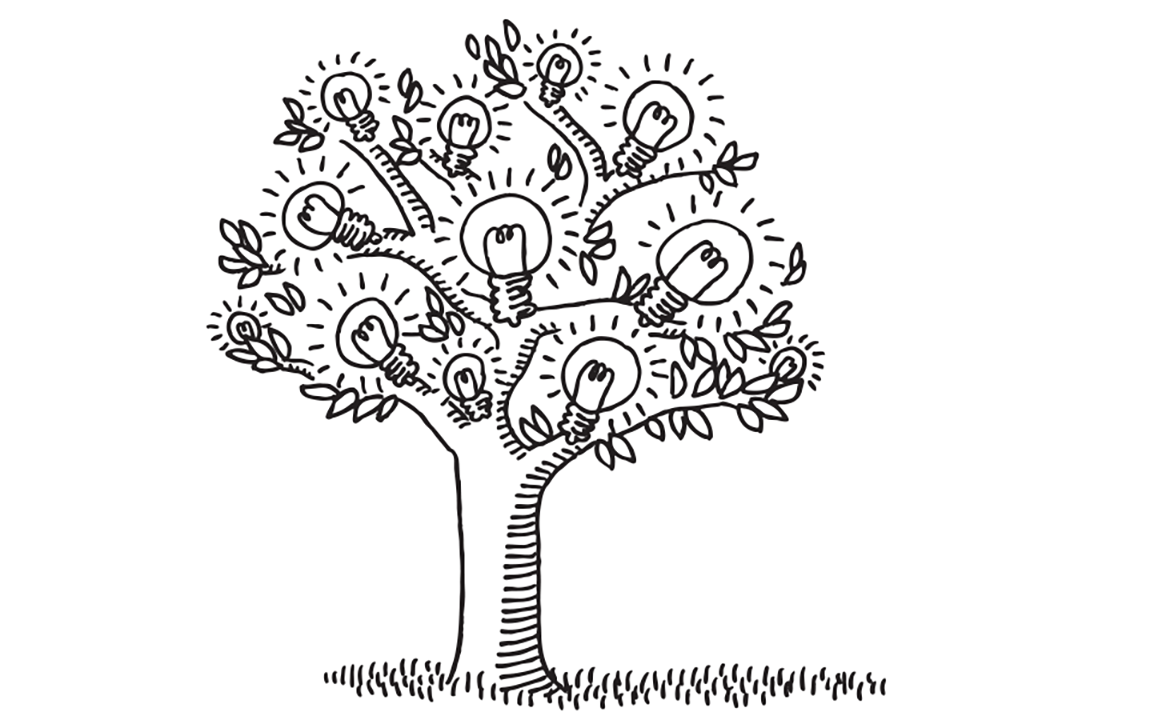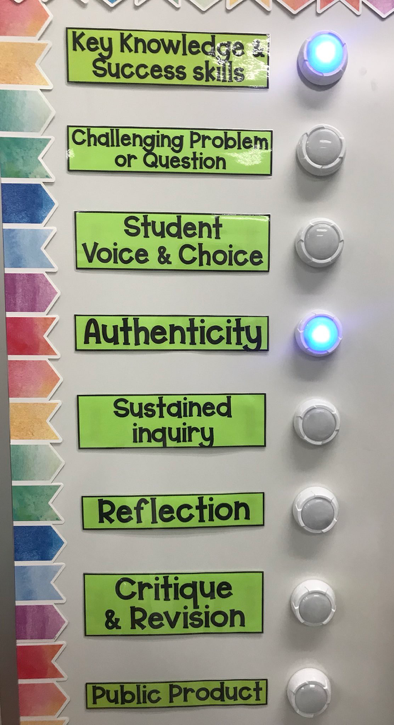
Does the question, “But how can I incorporate Project Based Learning into my daily instruction on what I have to teach?” sound familiar? This is a question I often hear from teachers as they begin the journey from traditional teaching to Project Based Learning and yet they still have to teach a traditional reading program or math concept. This typically happens in the lower elementary grade levels, where we teach students basic concepts such as how to read or what addition means.
I have one simple solution: light it up! In my classroom of twenty-six fifth graders in Loudoun County Virginia, we use electric lights to show when we’re using the Gold Standard PBL Essential Project Design Elements even when we’re not doing a full project.
A Flash of Inspiration
I had enjoyed reading Kristyn Kamps’ blog post on "Promoting a PBL Mindset in a Mainstream Setting: The Dimmer Switch Approach.” She talks about how we can incorporate the Gold Standard Elements into our regular teaching as a way to move toward more widespread use of PBL.
And then… I was at Home Depot one day and spotted a set of eight push lights for less than $20.00. I realized I could use this visual aid in my fifth grade classroom each and every day. At Goshen Post Elementary School we are a "wall to wall" PBL school in its first year. The school opened last August, and we are developing our PBL instructional practices across the school. So I wanted a way to represent, for my students, which elements we were focusing on throughout our entire school day, to help them learn what PBL is like.

How We Use the Lights
At times, when we are engaged in Gold Standard PBL work, all lights will be lit, and we progress through them using various colors (green means we’ve mastered that component, red means we are not there yet, blue means we have some questions, etc.). In other parts of our day, we might be hitting only one or two of the elements.
For example, during a reading workshop lesson, students may choose which book they prefer to read, as long as it follows the mini lesson on fantasy fiction. Or we may be reflecting on an experience and students can choose to reflect through a video clip or a written response. During these times, we would only turn on the “Student Voice & Choice” and “Reflection” lights. Giving students the choice while showing them they are doing these elements all day, is simply visually representing the best practices.
I also encourage and explicitly teach the students how to identify the element themselves. To identify the element correctly, students need to develop metacognitive skills and the reflective thinking process that align with the heart of Project Based Learning. When they realize what element they’re practicing, students may run up and hit the button.
Good for Teachers Too
I shared my idea initially with the rest of my fifth-grade team and it caught on like wildfire. Now many other staff members are incorporating their own "dimmer switch" in their classrooms.
So, next time someone asks how to incorporate just a few of the elements, you can tell them to light it up! There are a ton of ways teachers can use this concept and visually represent what is going on in their classroom. It’s not only for the students, but for the teachers too! Not only does it keep the students aware of their learning process, but it helps guide the teacher as he/she moves into more of the facilitator role.

